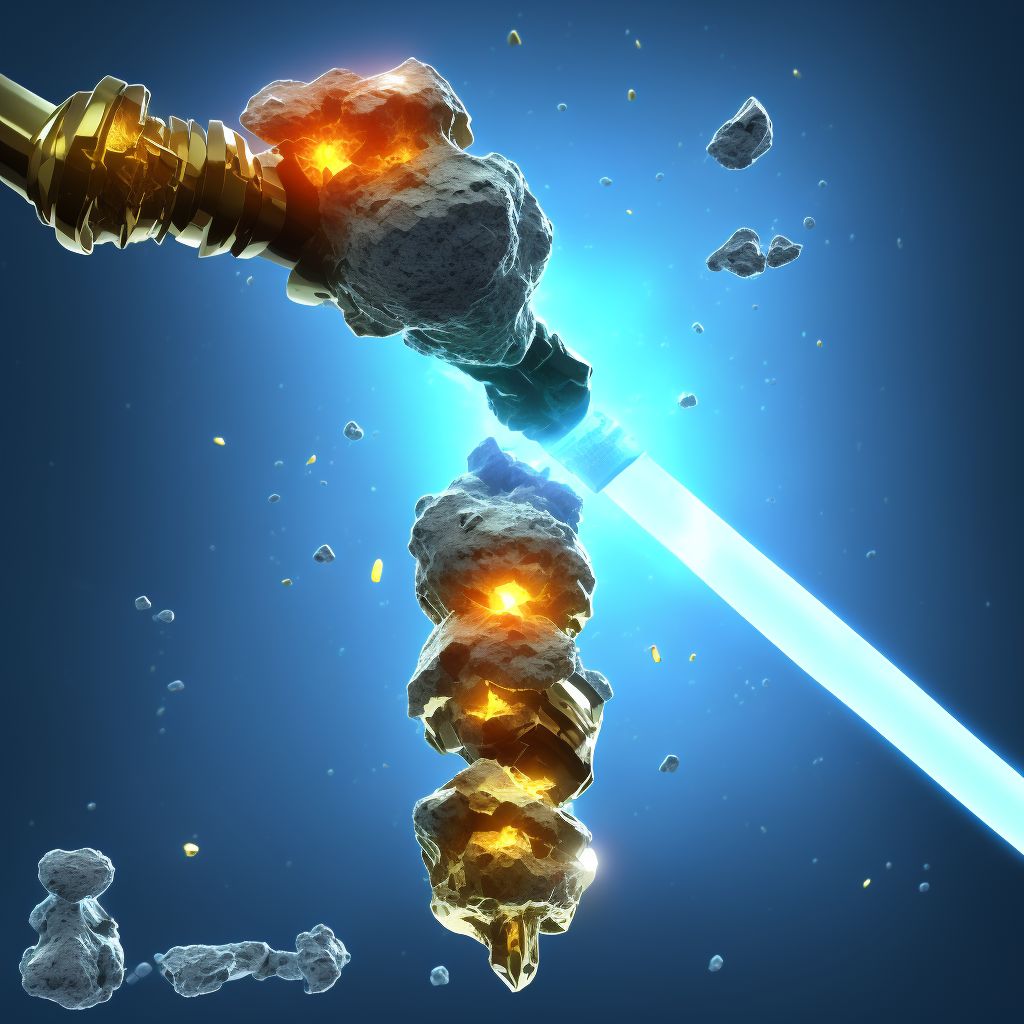
Unspecified fracture of shaft of left fibula, subsequent encounter for open fracture type IIIA, IIIB, or IIIC with nonunion Save
ICD-10 code: S82.402N
Disease category: S82.402: Unspecified fracture of shaft of left fibula
Unspecified Fracture of Shaft of Left Fibula: A Closer Look
An unspecified fracture of the shaft of the left fibula refers to a fracture in the long, slender bone located on the outer side of the lower leg. This type of fracture occurs when there is a break in the middle portion of the fibula without any specific details provided about the severity or location of the fracture.
If left untreated or not properly managed, an unspecified fracture of the shaft of the left fibula can lead to complications, such as nonunion. Nonunion occurs when the fractured bone fails to heal within the expected timeframe, resulting in a delayed or absence of bone union.
During a subsequent encounter for an open fracture type IIIA, IIIB, or IIIC with nonunion, the focus is on addressing the nonunion and providing appropriate treatment to promote bone healing. This encounter is crucial in managing the complications associated with the initial fracture, ensuring proper bone union, and restoring functionality.
- Diagnosis: The subsequent encounter involves a thorough evaluation of the patient's condition, including a comprehensive physical examination, imaging studies, and a review of medical history. This step allows healthcare professionals to accurately diagnose the nonunion and determine its severity.
- Assessment: Once the diagnosis is confirmed, healthcare professionals assess the patient's overall health and the specific factors contributing to the nonunion. This assessment helps inform the subsequent treatment plan.
- Treatment Plan: While we won't focus on treatment in this article, it's important to note that the subsequent encounter revolves around creating an individualized treatment plan tailored to the patient's unique situation, considering factors such as age, overall health, and the severity of the nonunion.
By addressing the nonunion during the subsequent encounter, healthcare professionals aim to promote bone healing, reduce pain and discomfort, and restore the patient's mobility and quality of life.
It is crucial to seek prompt medical attention for any fibula fracture to prevent complications like nonunion. If you have experienced an unspecified fracture of the shaft of your left fibula and subsequent nonunion, consult with a healthcare professional to evaluate your condition and determine the best course of action for your recovery.
Treatment of Unspecified fracture of shaft of left fibula, subsequent encounter for open fracture type IIIA, IIIB, or IIIC with nonunion:
Treatment Options for Unspecified Fracture of Shaft of Left Fibula with Nonunion
An unspecified fracture of the shaft of the left fibula with nonunion can be a challenging condition to treat. However, several treatment options are available to help patients regain mobility, alleviate pain, and promote healing.